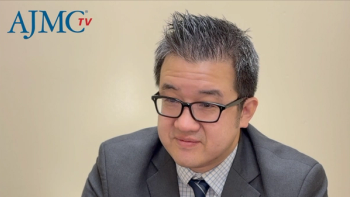
Overview of Spinal Muscular Atrophy
Panelists discuss how spinal muscular atrophy is an autosomal recessive genetic disease affecting motor neurons with 3 currently approved disease-modifying therapies that restore SMN protein expression, including 2 requiring ongoing treatment and 1 gene transfer therapy (onasemnogene abeparvovec) approved only for patients under 2 years of age.
Episodes in this series

Overview of Spinal Muscular Atrophy
Spinal muscular atrophy (SMA) is an autosomal recessive genetic disease that causes progressive degeneration of motor neurons, affecting approximately 1 in 10,000 births. The condition is caused by mutations in the SMN1 gene and typically manifests in infants and children, leading to progressive weakness and disability. SMA presents across a spectrum of severity, with the most severe forms preventing infants from achieving meaningful developmental milestones and often resulting in death due to associated complications. This progressive neurodegenerative condition represents a significant challenge in pediatric neurology due to its early onset and rapidly deteriorating course.
Currently, there are 3 approved disease-modifying therapies for SMA treatment, all designed to restore expression of the SMN protein, which is the product of the SMN1 gene. Two of these therapies work by modulating the splicing of a second gene called SMN2, effectively compensating for the deficient SMN1 gene function. This approach leverages the body’s existing genetic machinery to produce functional SMN protein through alternative pathways. The third approved therapy takes a different approach entirely, utilizing gene transfer technology to directly address the underlying genetic defect.
The gene transfer therapy, onasemnogene abeparvovec, represents an AAV9-mediated gene therapy approach that delivers functional genetic material directly to patients. This therapeutic strategy marks a significant advancement in SMA treatment, moving beyond symptomatic management to address the root cause of the disease at the genetic level. The availability of 3 distinct disease-modifying therapies reflects the rapid progress in SMA treatment development and provides clinicians with multiple options for managing patients across the disease spectrum. These therapies have transformed the treatment landscape for SMA, offering hope for improved outcomes in a condition that was previously considered uniformly fatal in its most severe forms.
Newsletter
Stay ahead of policy, cost, and value—subscribe to AJMC for expert insights at the intersection of clinical care and health economics.










































